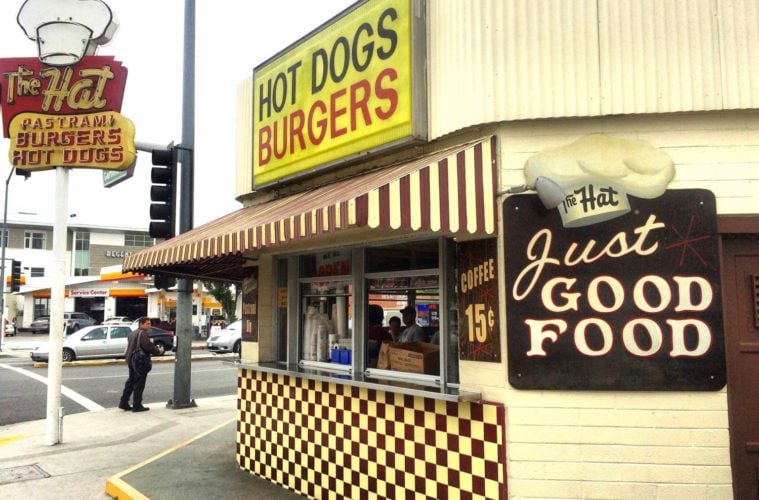There’s something magical about a vintage restaurant that has managed to survive as the city around it grows and changes. Besides nostalgia and memories, our longstanding eateries conjure ghosts of history and are time machines back to the decor and architecture of early Los Angeles. Here are a few special restaurants that continue to serve as examples of the times they were created.
1900s
The French dip sandwich got its juicy start in downtown L.A. Cole’s restaurant claims that the gravy-dipped roll was requested by a customer with sore gums who couldn’t eat crunchy bread, while rival restaurant Philippe says that their cook accidentally dropped a roll into a bubbling vat of au jus. Both restaurants opened in 1908. Cole’s (118 E. 6th St., downtown) in L.A.’s tallest building at the time, 10 towering levels, has been restored to its original glory with its wooden bar, crimson wallpaper and stained glass. Philippe (1001 N. Alameda St., Chinatown) is slightly more rustic, with long communal wooden tables, sawdust on the concrete floors and a few vintage wooden booths.
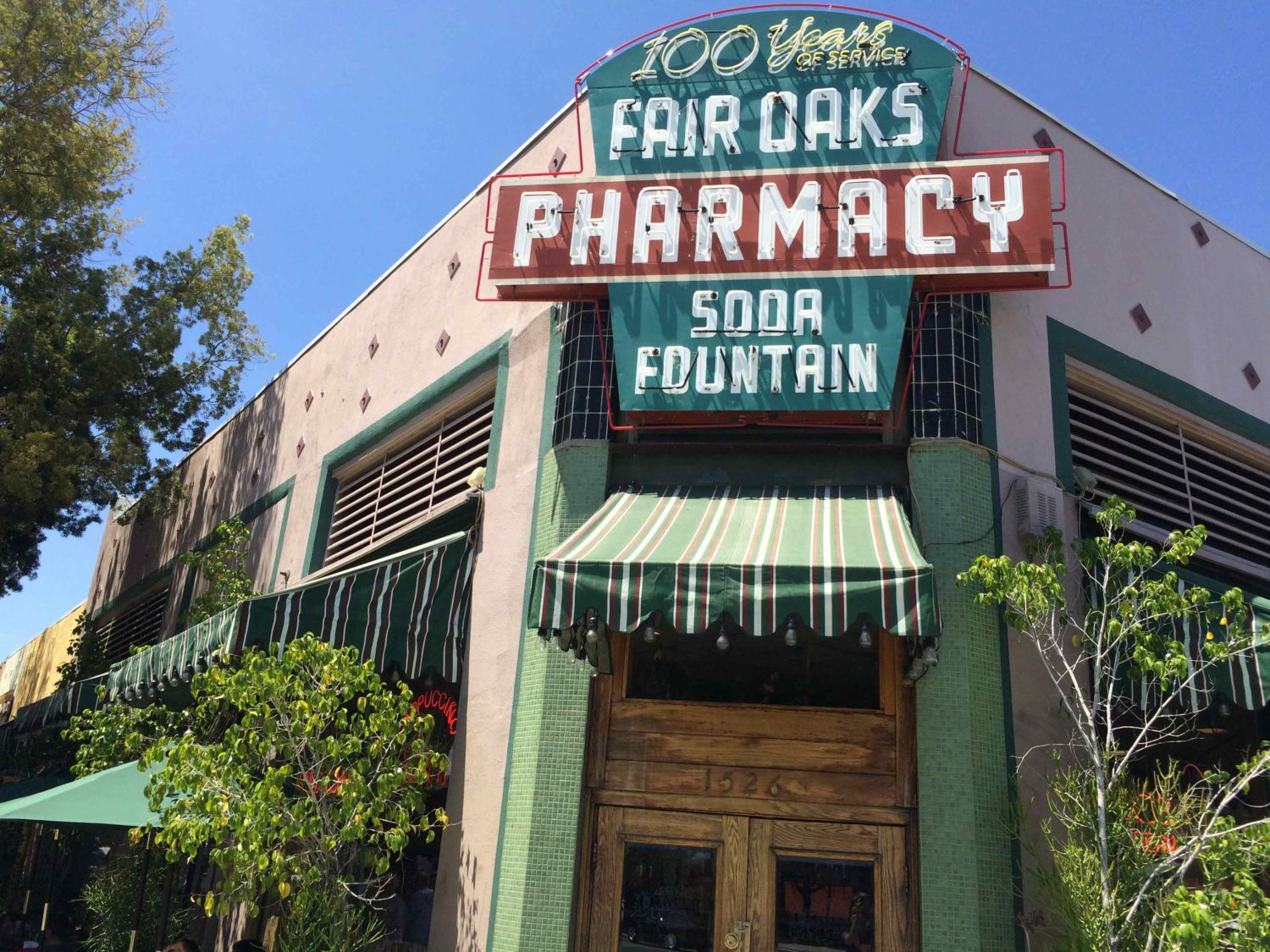
Fair Oaks Pharmacy & Soda Fountain ( Nikki Kreuzer)
1910s
Fair Oaks Pharmacy (1526 Mission St., South Pasadena) opened in 1915 when this stretch of road was still called Route 66. It’s one of the only surviving soda fountains in the area, fully restored a few decades ago with heavy oak doors, tin ceilings, honeycomb tile floors and vintage soda fountain equipment.
Musso & Frank Grill (6667 Hollywood Blvd., Hollywood) is Hollywood’s oldest restaurant, opened in 1919 and known for serving movie stars, screenwriters and deal-makers. Specializing in old-fashioned American food, their fettuccine alfredo recipe was brought to the U.S. from Italy in the 1920s by silent film stars Mary Pickford and Douglas Fairbanks.
1920s
The Tam O’Shanter (2980 Los Feliz Blvd., Atwater Village) was built in 1925 in the storybook architectural style by Hollywood set designer Harry Oliver, designer of the Witch’s House in Beverly Hills. This Scottish-themed steakhouse counted Walt Disney, Mary Pickford, Fatty Arbuckle, Tom Mix and John Wayne as customers.
The two oldest surviving Mexican restaurants in L.A. opened during the 1920s. El Cholo (1121 Western Ave., Harvard Heights) got its start in 1927 and claims to be the first in town to serve nachos, beginning in 1959. La Golondrina (17 Olvera St., downtown) opened in 1928 and is located in the city’s oldest brick building, built in 1855.
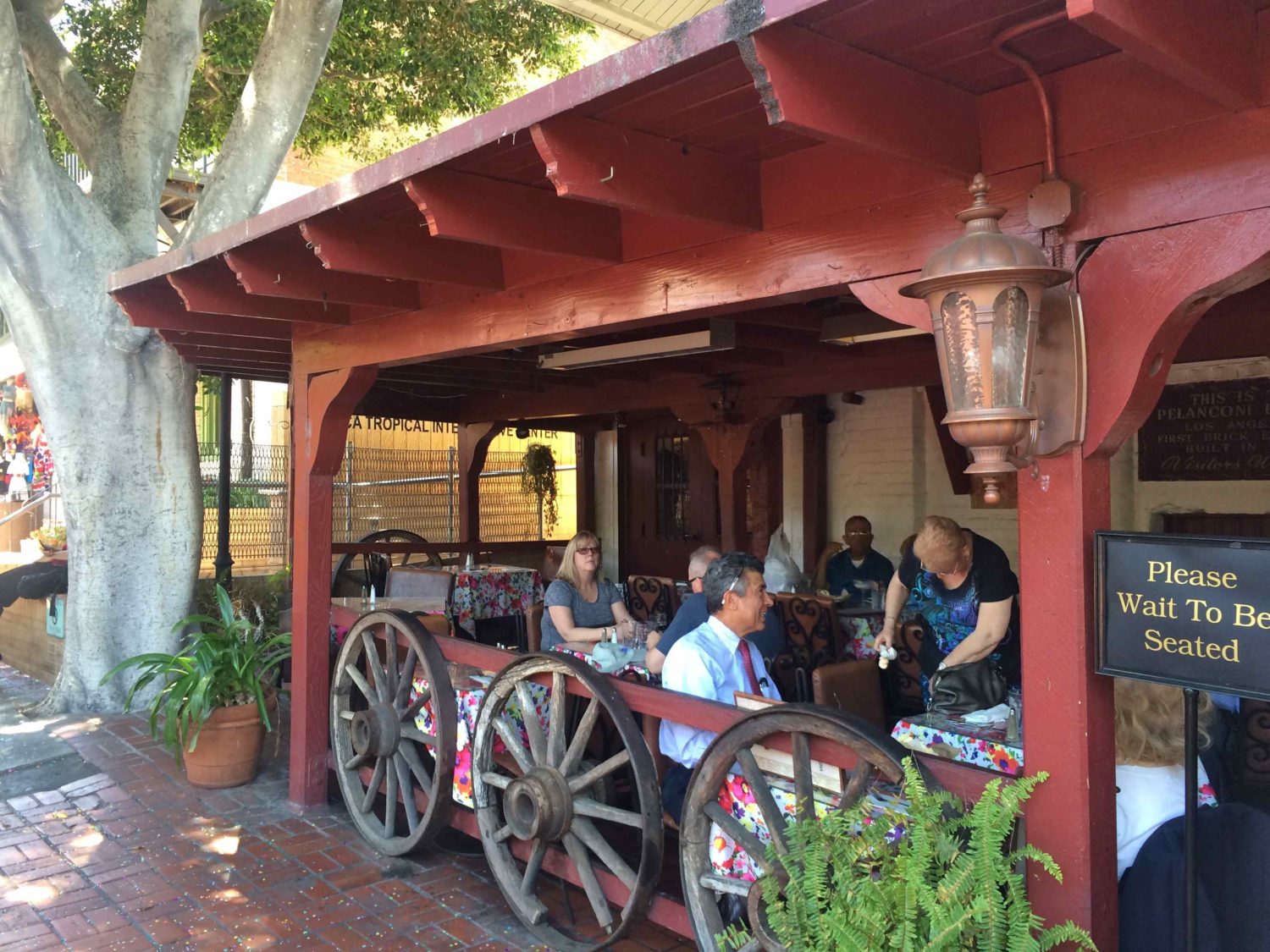
La Golondrina (Nikki Kreuzer)
1930s
The Derby (233 Huntington Drive, Arcadia) was opened in 1938 by celebrated Seabiscuit jockey George Woolf. Filled with vintage horse racing memorabilia, this steakhouse exemplifies 1930s elegance with brick walls, beamed ceilings and burgundy leather booths.
The Galley (2442 Main St., Santa Monica), Santa Monica’s oldest restaurant, opened in 1934 featuring a nautical theme, windows resembling portholes and set pieces from the 1934 film Mutiny On the Bounty. This steak and seafood spot became a hangout for film stars of the era, including Errol Flynn, Carole Lombard, Edward G. Robinson and Charles Laughton.
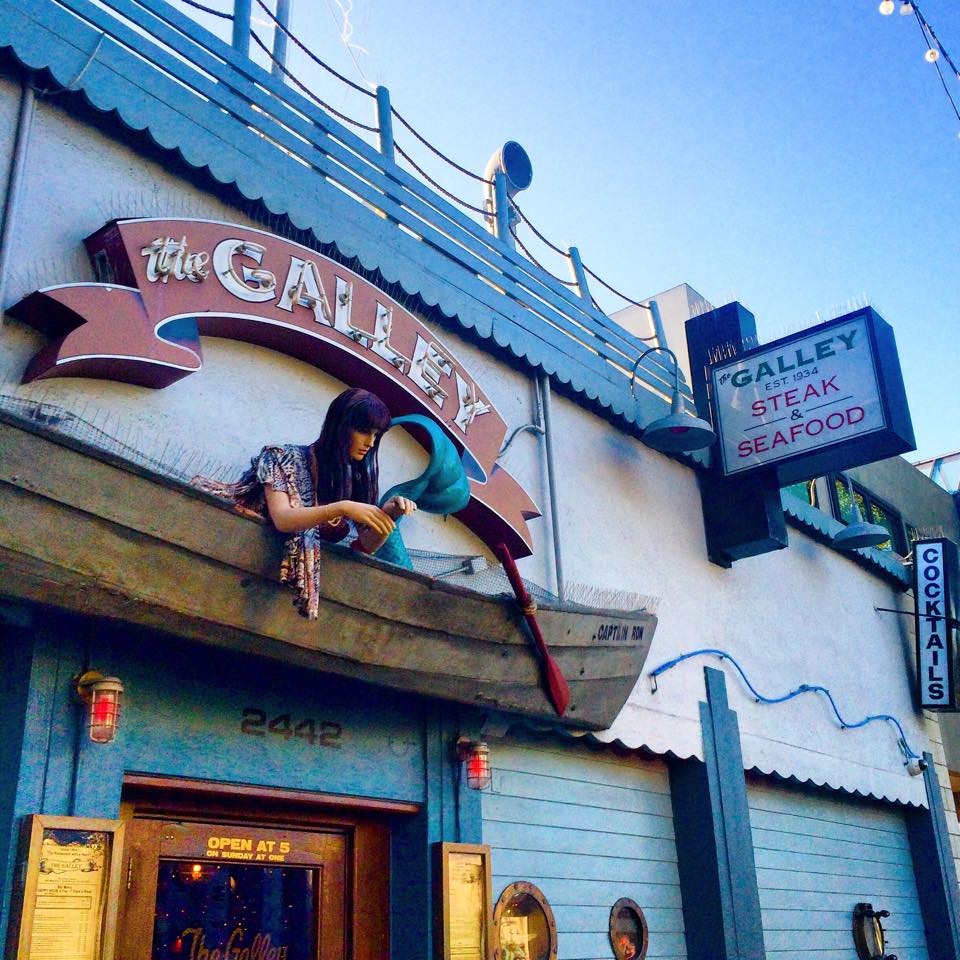
The Galley (Nikki Kreuzer)
1940s
Chili John’s (2018 W. Burbank Blvd., Burbank) opened in 1946, serving a limited menu of chili dishes topping spaghetti noodles. The diner-style layout has a U-shaped counter, orange vinyl stools and a rustic mural of mountains and sky. With a similar U-shaped counter, The Apple Pan (10801 W Pico Blvd., West Los Angeles) opened in 1947 and has an equally small menu consisting of hamburgers, fries and pies.
Steak ‘N Stein Inn (9545 E. Whittier Blvd., Pico Rivera) is a kitschy steak house with a circular stone fireplace, dark colors and plenty of stained glass. It was opened in 1946 by a trained Shakespearean actor who was also responsible for the over-the-top Magic Lamp in Rancho Cucamonga and Clearman’s Northwoods Inns in San Gabriel and Covina.
Langer’s Deli (704 S Alvarado St., Westlake), known for its pastrami and matzo ball soup, was opened in 1947 by a New Jersey transplant. It’s kept its original appearance with vintage signs, multi-colored tile behind the deli counter and knobby wood room dividers.
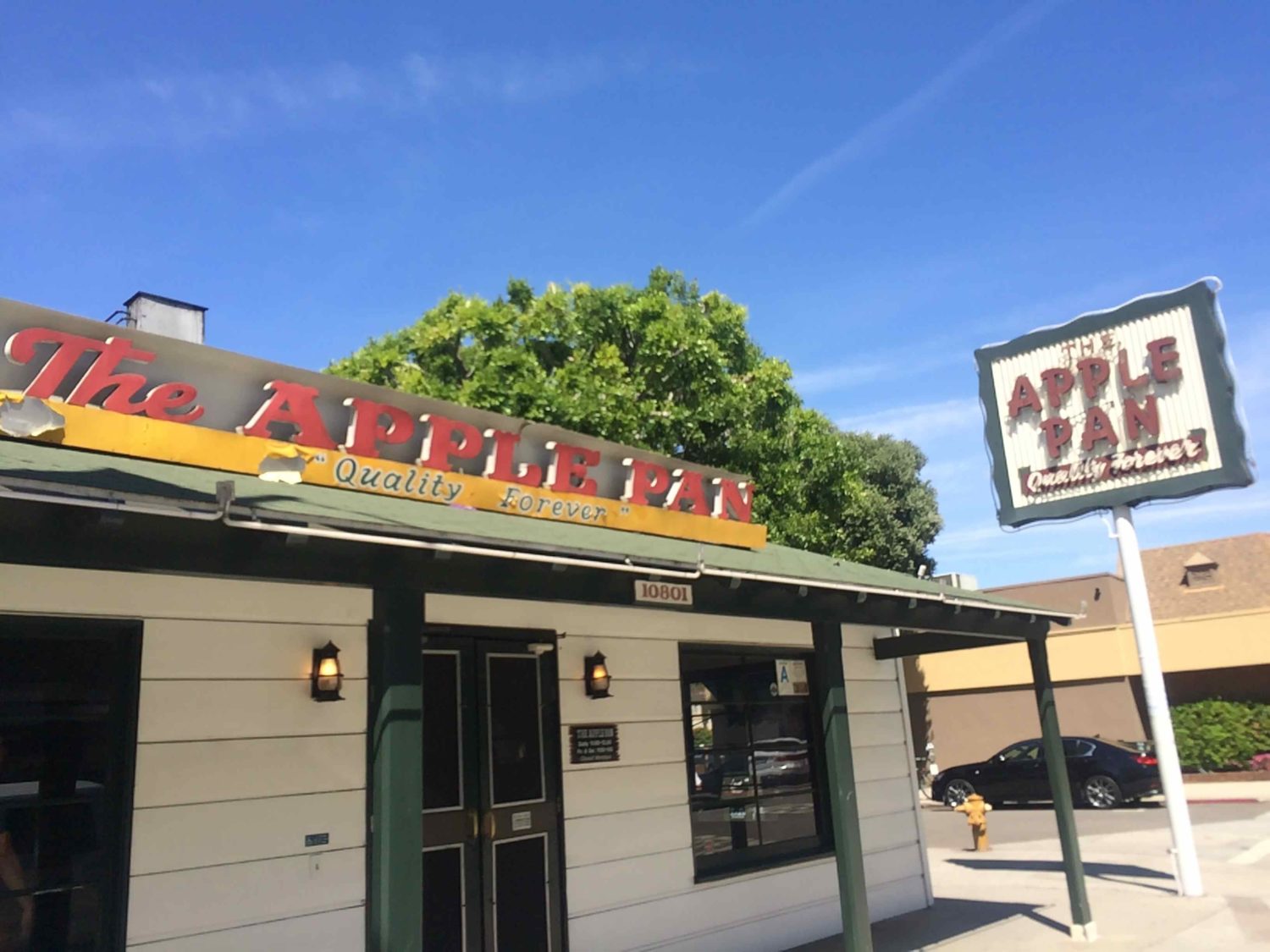
The Apple Pan )Nikki Kreuzer)
1950s
The Hat (1 W Valley Blvd,. Alhambra) opened in 1951 as a small corner burner stand selling 25¢ hamburgers, 5¢ cups of coffee and massive pastrami sandwiches. Almost demolished in 1981, it was rescued and has expanded into a small local chain of 11 restaurants.
Remnants of Eagle Rock’s Italian past still exist in Colombo’s (1833 Colorado Blvd., Eagle Rock), opened in 1954 and Casa Bianca (1650 Colorado Blvd., Eagle Rock) opened 1955, both serving gooey Italian deliciousness. Colombo’s is dimly lit with red leather booths, wood paneled walls, iron chandeliers and live jazz, while Casa Bianca has amazing vintage neon and a casual family vibe.
Dal Rae (9023 E. Washington Blvd., Pico Rivera) is the place to try some of those classic 1950s menu items that you’ve only heard of: oysters Rockefeller, sauteed frog legs, duck a l’orange or flaming cherries jubilee. It was opened in 1958 when an ashtray on every table and a martini with lunch were the norm.
Chez Jay (1657 Ocean Ave., Santa Monica) was opened in 1959 by a struggling actor from the East Coast. With red leather booths, wood paneled walls, porthole windows and saw dust on the floor, it became a hangout to Richard Burton, Peter Sellers, Frank Sinatra, Dean Martin, Sammy Davis Jr., Joe DiMaggio, Judy Garland, the Beach Boys and Jim Morrison.
1960s
Casita del Campo (1920 Hyperion Ave., Silver Lake) was opened in 1962 by dancer Rudy del Campo who played, one of the Sharks in the film version of West Side Story. Serving Mexican food, its romantic dining room consists of knobby wood and red leather booths.
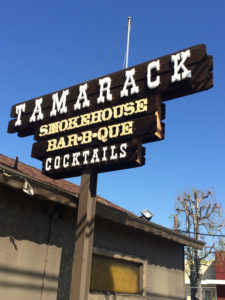
Tamarack Inn (Nikki Kreuzer)
The Tamarack Inn (9257 Slauson Ave., Pico Rivera) is a rustic old-school tavern opened in 1962. Its cabin-like building is completely made of dark wood — from ceiling to walls to floors to bar to tables. Serving a menu heavy on burgers, steak and BBQ, the decor includes snow shoes on the ceiling and stained glass windows to let in small shafts of colored light.
La Dolce Vita (9785 Santa Monica Blvd., Beverly Hills) was designed in 1966 by famed art director Lyle Wheeler, winner of five Academy Awards and responsible for set design on 361 films, including Gone With the Wind, The Seven Year Itch and The King and I. This fancy Italian spot was frequented by Frank Sinatra, George Raft, the Kennedys and the Reagans.
Advertising disclosure: We may receive compensation for some of the links in our stories. Thank you for supporting LA Weekly and our advertisers.

